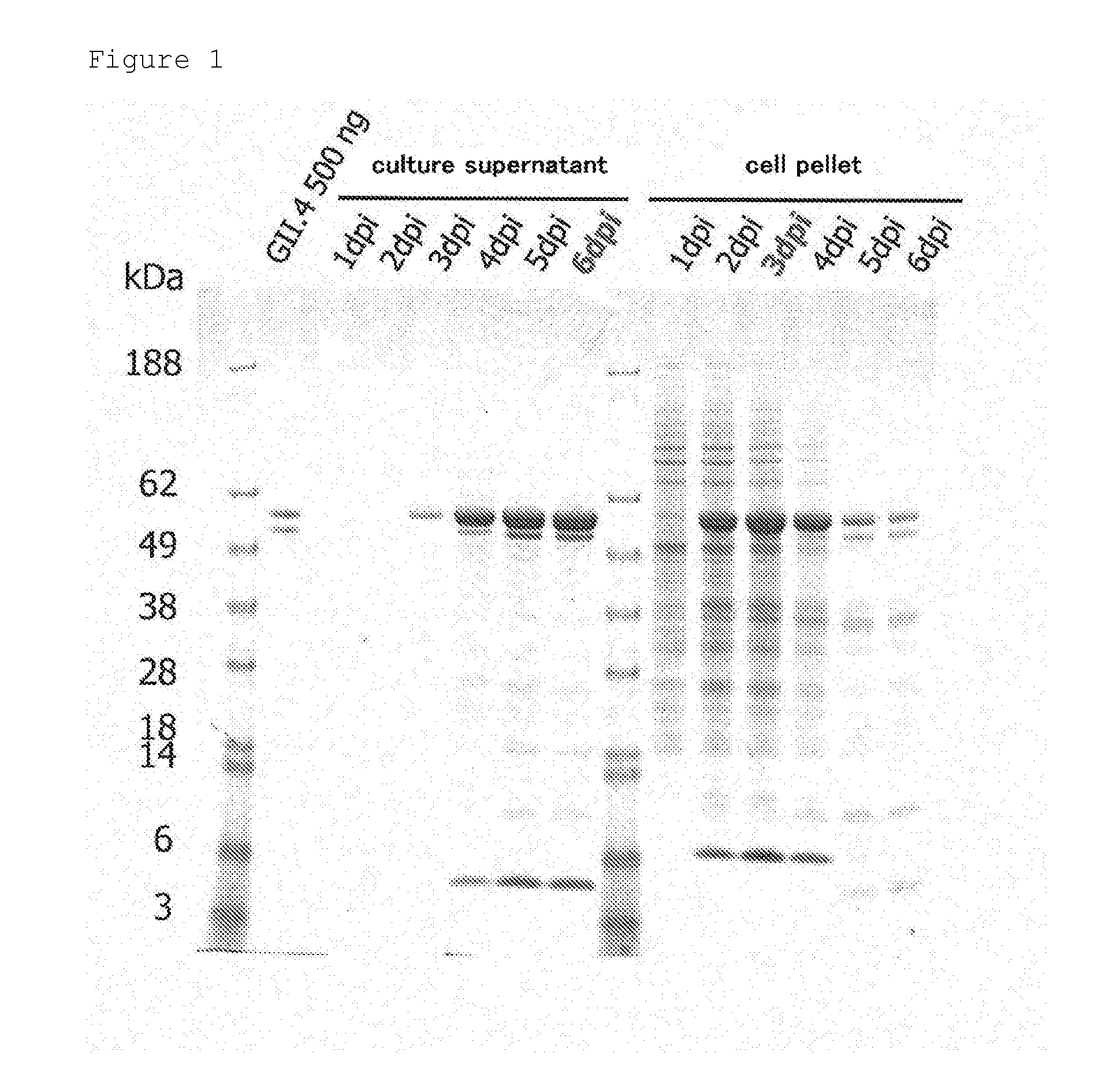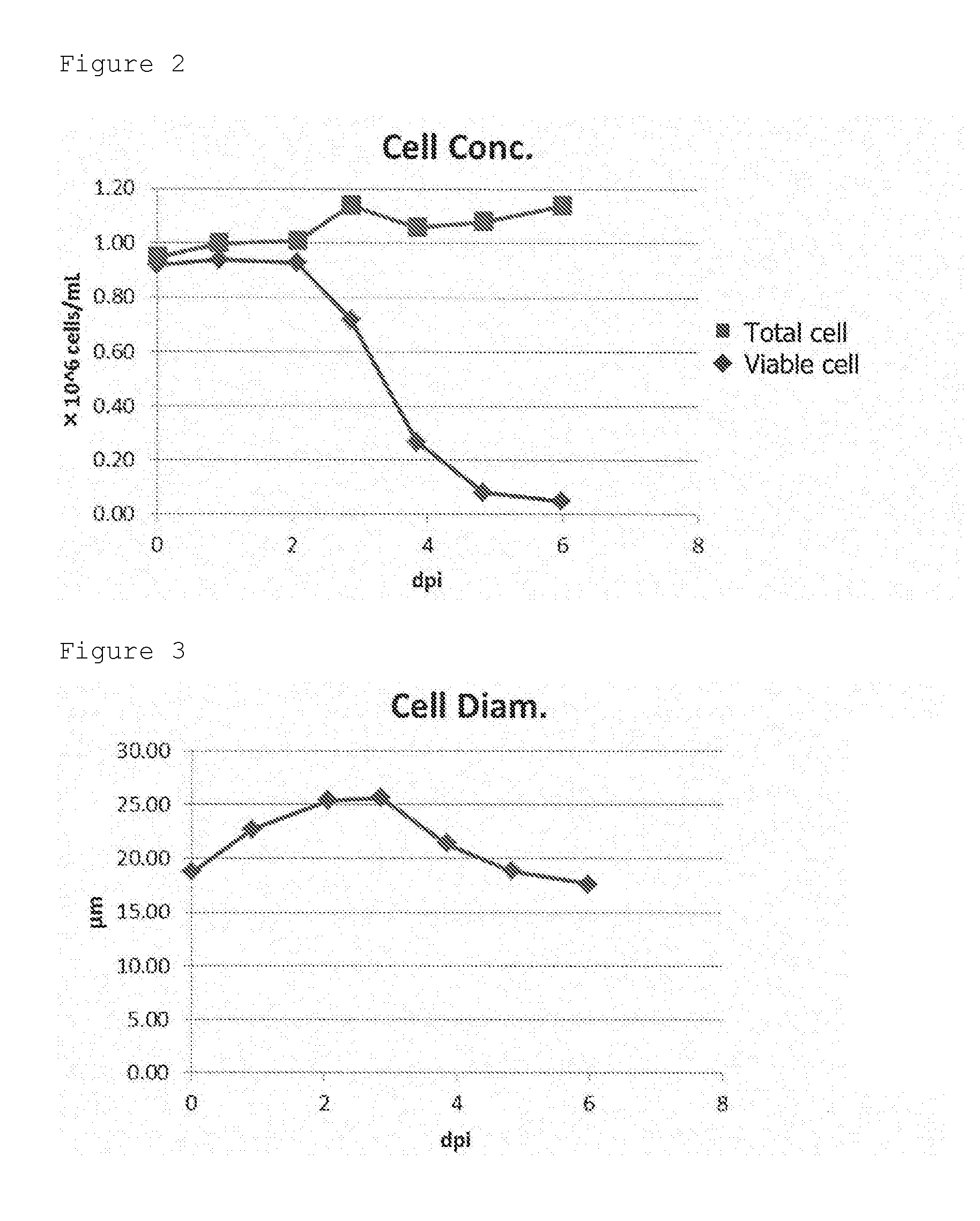Production method for culture containing virus-like particles
a technology of virus-like particles and culture, which is applied in the direction of dsdna viruses, peptide sources, antibody medical ingredients, etc., can solve the problems of not performing culture for such a long time, and achieve the effect of excluding the effect of a surfactant used in the disrupting process
- Summary
- Abstract
- Description
- Claims
- Application Information
AI Technical Summary
Benefits of technology
Problems solved by technology
Method used
Image
Examples
example 1
Cell Cultivation
[0040](1) Experimental Methods
[0041]1 Preparation of Recombinant Baculovirus
[0042]A cDNA encoding VP1, whose amino acid sequence is shown in SEQ ID NO.: 1, of a norovirus strain classified as GII-4, which was collected from an inpatient in University of Tampere, was incorporated into a transfer plasmid (pFastBac, Invitrogen). Then, the transfer plasmid incorporated with the cDNA was introduced into DH10Bac (Invitrogen), which is an Escherichia coli having a baculovirus genome, and the cDNA encoding the norovirus VP1 was incorporated into the baculovirus genome DNA by homologous recombination. The baculovirus genome DNA was extracted from the Escherichia coli, purified, and introduced into insect cells (expresSF+cells, Protein Sciences). The insect cells were cultivated, and from the culture supernatant, recombinant baculovirus was obtained.
[0043]2 Cultivation to Express the GII-4 VP1
[0044]The recombinant baculovirus (MOI=1) was added to the insect cells (expresSF+cel...
example 2
Measurement of Cell Viability and the Like
[0053]The cells (expresSF+cells) were cultivated by using a bioreactor. PSFM medium was used as a medium, and the cultivation temperature was 27° C. The culture solution was collected at just before the infection of the baculovirus expressing GII-4 VP1 and at 1-6 days after the infection. The viable cell number, the total cell number, the cell diameter, and the viability were measured by an automated cell viability analyzer (Vi-CELL XR, Beckman Coulter).
[0054]The temporal change of viable cell number and total cell number was shown in FIG. 2. The temporal change of cell diameter was shown in FIG. 3. The temporal change of viability was shown in FIG. 4.
[0055]As shown in these figures, the viability of cells is rapidly reduced after 3 days from the start of the cultivation.
[0056]All the publications, patents, and patent applications cited in the present specification are incorporated into the present specification by reference in their entiret...
PUM
| Property | Measurement | Unit |
|---|---|---|
| temperature | aaaaa | aaaaa |
| temperature | aaaaa | aaaaa |
| time | aaaaa | aaaaa |
Abstract
Description
Claims
Application Information
 Login to View More
Login to View More - R&D
- Intellectual Property
- Life Sciences
- Materials
- Tech Scout
- Unparalleled Data Quality
- Higher Quality Content
- 60% Fewer Hallucinations
Browse by: Latest US Patents, China's latest patents, Technical Efficacy Thesaurus, Application Domain, Technology Topic, Popular Technical Reports.
© 2025 PatSnap. All rights reserved.Legal|Privacy policy|Modern Slavery Act Transparency Statement|Sitemap|About US| Contact US: help@patsnap.com



